Overview
The article presents a compelling overview of the advantages associated with remote monitoring of solar fields. This innovative approach significantly enhances operational efficiency, achieves cost savings, optimizes performance, and promotes environmental sustainability. By providing real-time data access, predictive maintenance, and robust integration capabilities, remote monitoring effectively reduces operational expenses and boosts energy output. Such advancements ultimately facilitate greater compliance and adaptability in solar energy management, addressing the complex challenges faced by stakeholders in the industry.
Introduction
The transition to renewable energy has positioned solar power as a leading sustainable solution. However, the quest for maximizing its efficiency presents a formidable challenge. Remote monitoring of solar fields stands out as a transformative approach, delivering numerous benefits that bolster operational performance and drive down costs. Yet, the pressing question remains: how can this technology not only streamline management but also guarantee compliance and promote sustainability within a rapidly changing energy landscape?
Harbinger Land | Comprehensive Solutions for Land Services in Energy and Infrastructure
Harbinger Land stands at the forefront of land services, expertly tailored for energy and infrastructure projects across the United States. In an era where land acquisition complexities abound, including legal and regulatory challenges, our comprehensive offerings—site and right-of-way acquisition, advanced title research, and GIS mapping—provide effective solutions.
By leveraging cutting-edge technology, such as AI-powered title research software, Harbinger Land significantly enhances operational efficiency and client satisfaction. Have you considered how advanced technology can streamline your land acquisition process?
Our experienced team excels at mobilizing large groups swiftly to meet diverse project requirements, ensuring prompt and precise services tailored to the specific needs of clients in the natural gas, renewable energy, and municipal sectors. This commitment to innovation and expertise not only positions us as a leader but also guarantees that your projects progress without delay.
Discover how Harbinger Land can facilitate confident land rights acquisition for your projects. Connect with us today to explore our services and experience the difference that expertise and advanced technology can make.
Real-Time Data Access: Enhance Operational Efficiency
Real-time data access empowers energy field managers by facilitating remote monitoring of solar fields, enabling them to continuously monitor system performance. This capability facilitates the immediate identification of issues, such as underperforming panels or equipment malfunctions. By leveraging IoT sensors and advanced monitoring platforms, remote monitoring of solar fields allows managers to swiftly make informed decisions, thereby minimizing downtime and enhancing overall operational efficiency. This proactive strategy ensures that photovoltaic fields operate at peak efficiency, thereby maximizing energy output.
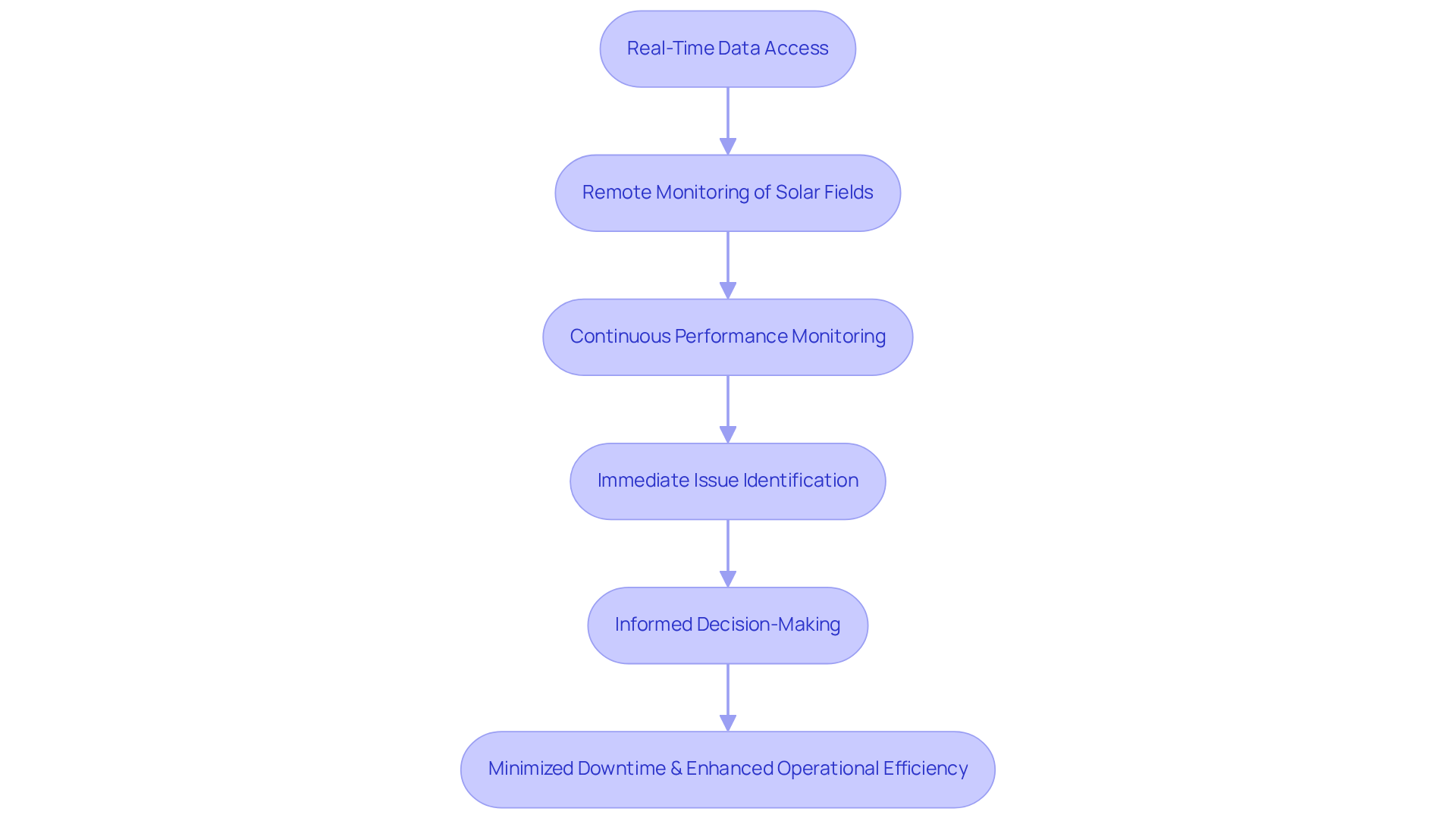
Cost Savings: Reduce Operational Expenses
Implementing remote monitoring of solar fields offers solar field managers an opportunity for significant cost reductions. By utilizing remote monitoring of solar fields to minimize the need for on-site inspections and reduce labor costs, operators can allocate resources more effectively.
Industry statistics indicate that remote monitoring of solar fields can reduce labor costs by as much as 30%, facilitating a substantial reallocation of resources to critical operational areas. Furthermore, remote monitoring of solar fields through predictive analytics can identify maintenance needs before they escalate into costly repairs, enhancing financial efficiency.
The Circle K case study exemplifies how resource management programs have led to considerable cost reductions through improved oversight and operational efficiency. Overall, these systems contribute to creating a more sustainable operational budget, ensuring the long-term feasibility of renewable initiatives.
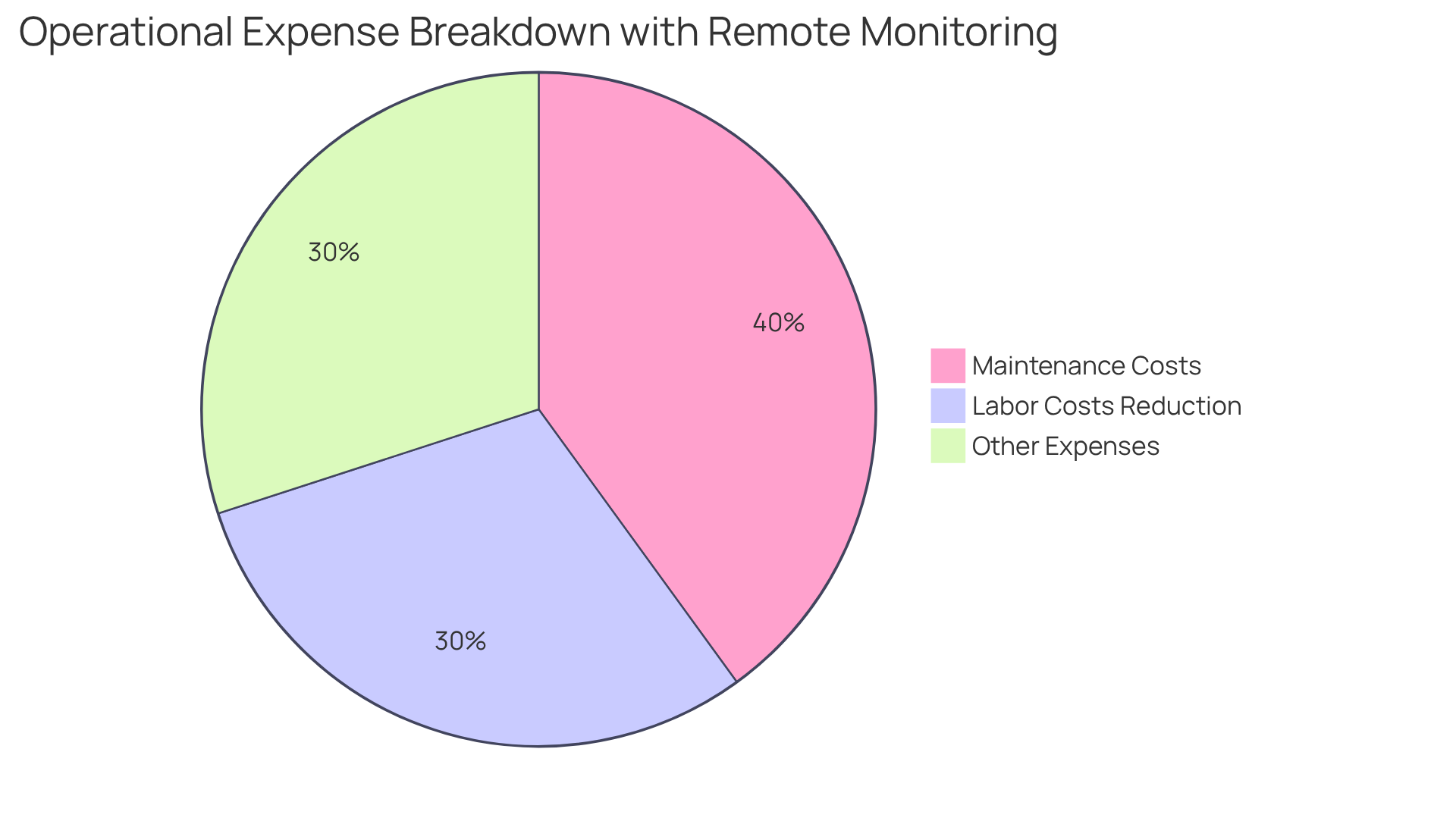
Performance Optimization: Maximize Energy Output
The performance of photovoltaic fields is significantly enhanced through remote monitoring of solar fields, which provides critical insights into production patterns and system efficiency. Operators can effectively modify settings and configurations to optimize power output through remote monitoring of solar fields by analyzing data on sunlight exposure, temperature, and panel performance. This ongoing optimization process guarantees that solar fields achieve the highest possible energy yield, which is essential for the overall success of solar energy projects.
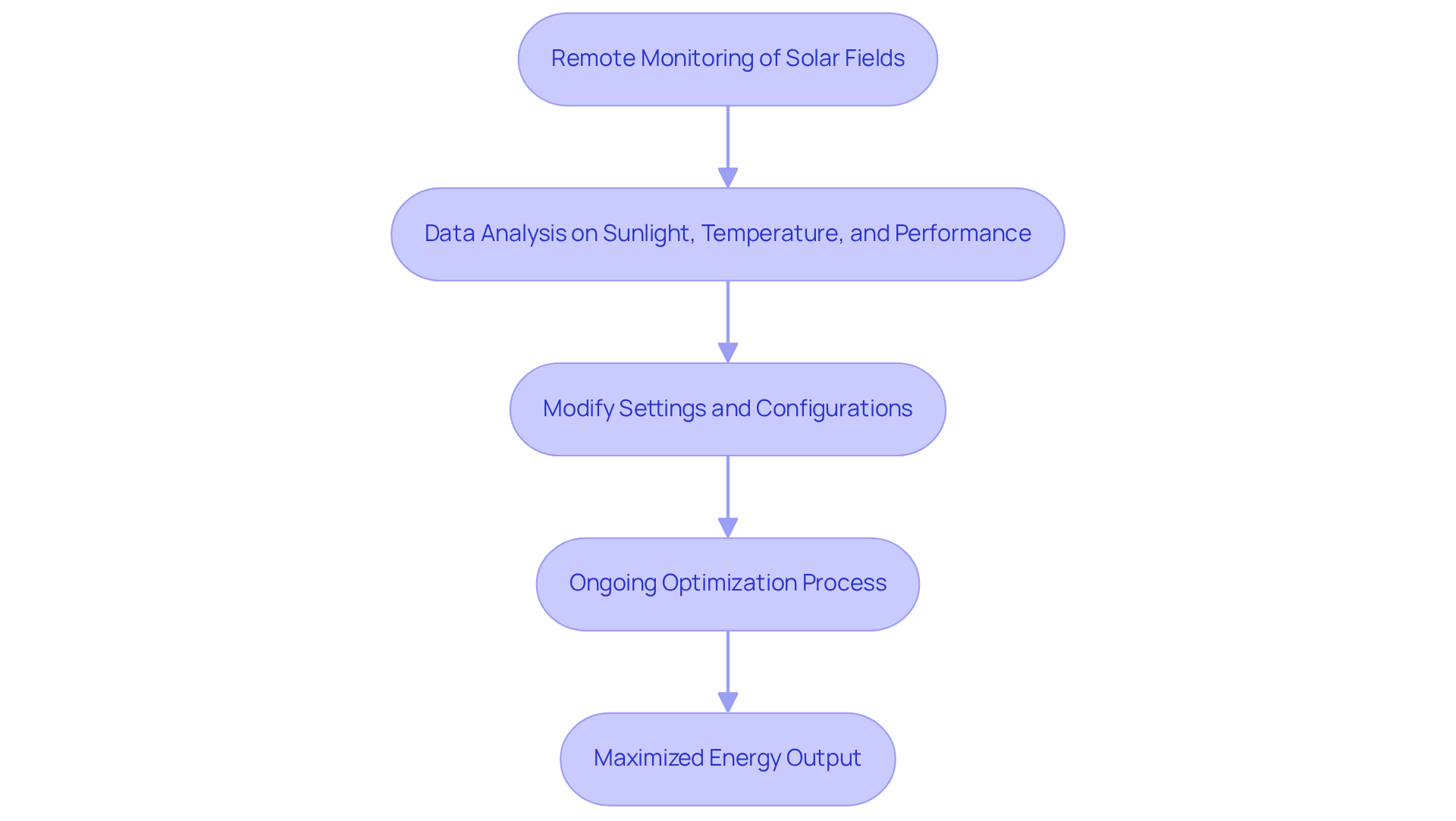
Predictive Maintenance: Prevent System Failures
Predictive maintenance stands as a pivotal strategy, leveraging data analytics to anticipate potential system failures before they manifest. By diligently monitoring key performance indicators alongside environmental conditions, operators can strategically schedule maintenance activities at optimal intervals. This proactive methodology significantly mitigates the risk of unexpected breakdowns. Moreover, it not only extends the operational lifespan of equipment but also guarantees a continuous flow of energy production, thereby minimizing service disruptions.
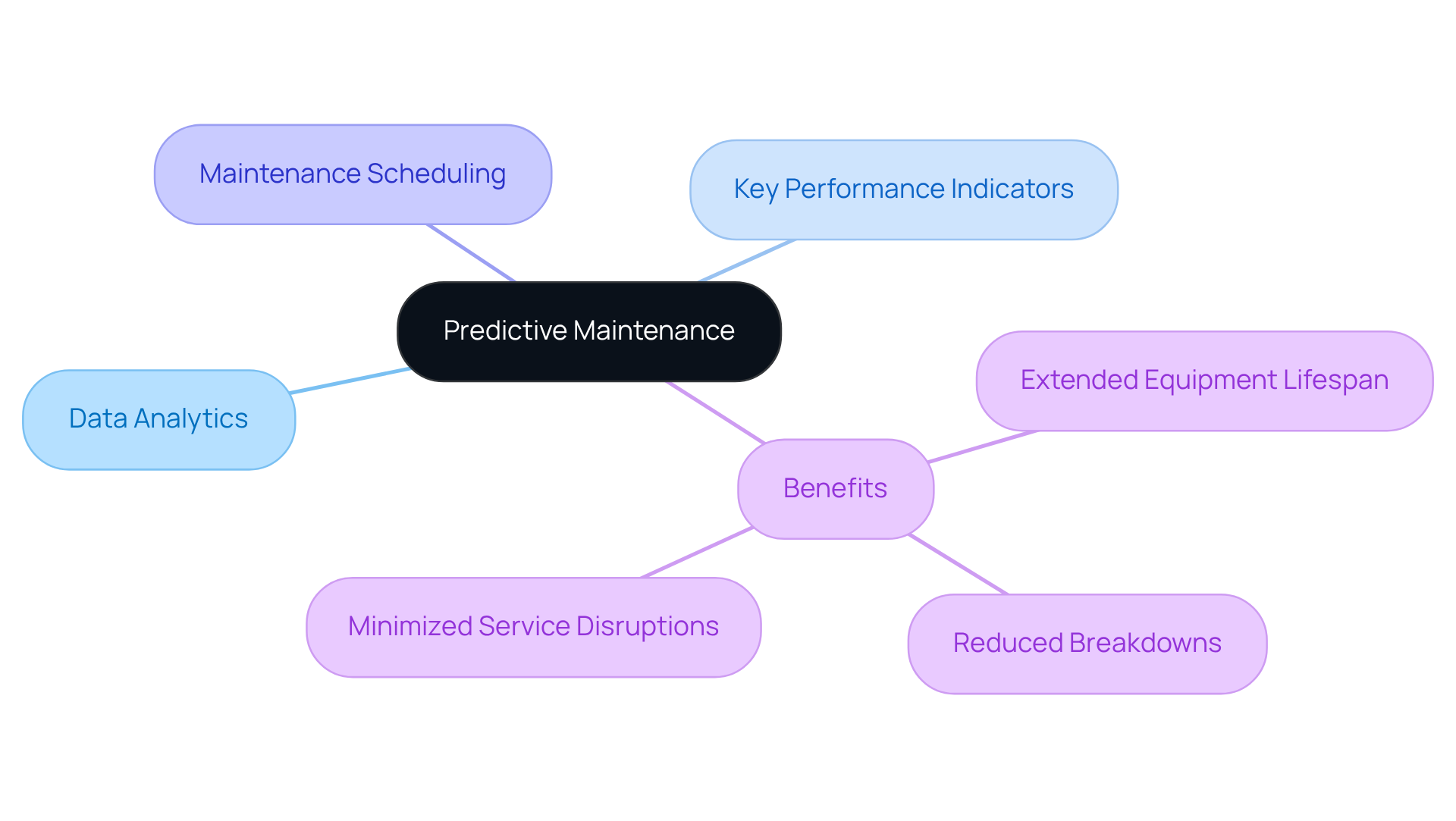
Enhanced Security: Protect Solar Assets
The security of photovoltaic fields is significantly enhanced through remote monitoring of solar fields, which provides real-time surveillance and notifications for unauthorized access or suspicious activities.
With the integration of video surveillance and motion detection technologies, operators can utilize remote monitoring of solar fields around the clock, ensuring swift responses to potential threats.
This heightened security not only safeguards physical assets but also protects the financial investments associated with energy projects.
By investing in such systems, operators can mitigate risks and secure their future in the energy sector.
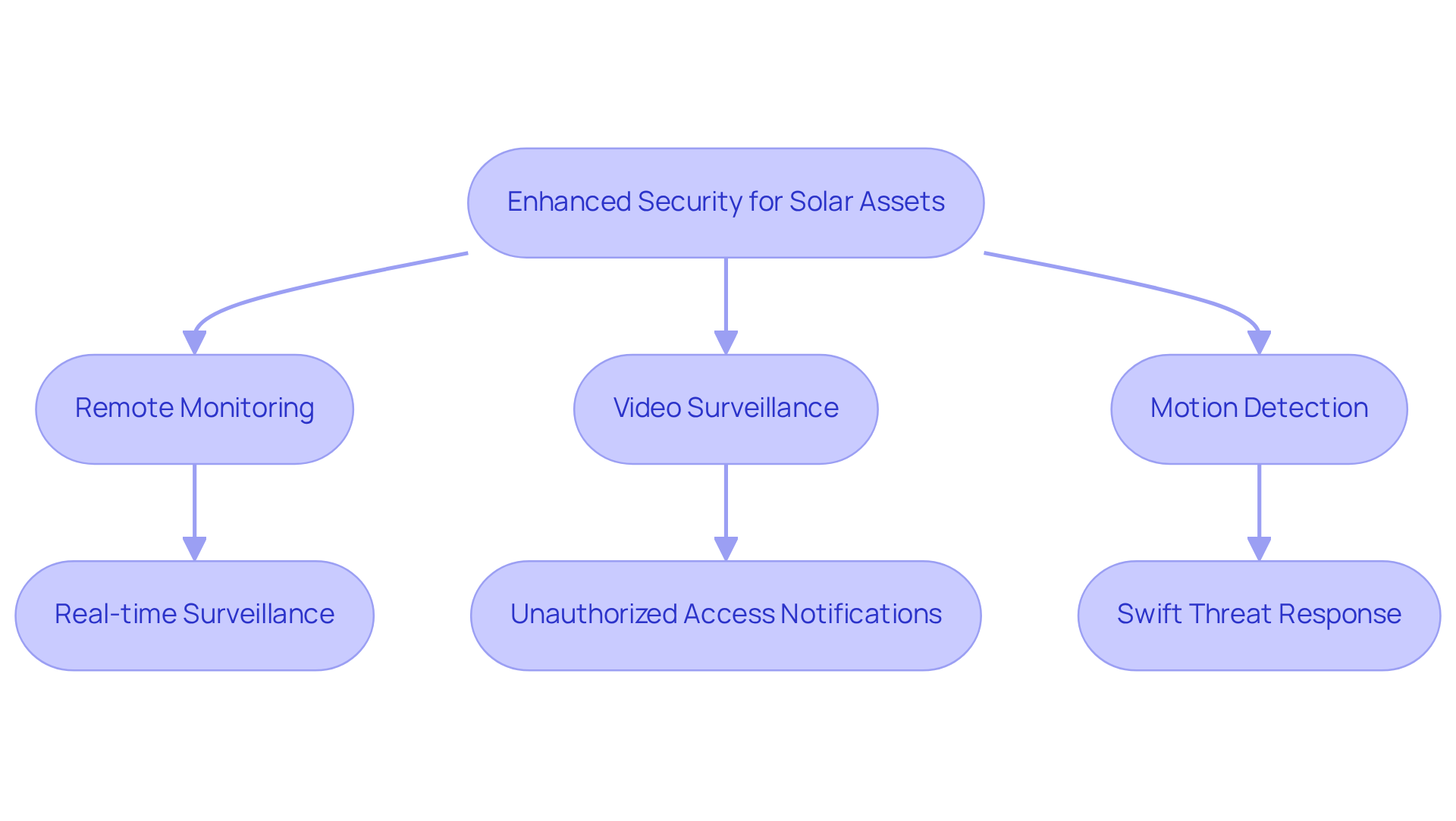
Environmental Benefits: Support Sustainability Goals
Remote monitoring of solar fields is crucial in achieving sustainability objectives by enhancing power generation and minimizing waste. By ensuring that photovoltaic fields operate at optimal efficiency, these systems significantly reduce the ecological impact associated with power generation. Moreover, real-time data empowers managers to make informed decisions that align with environmental regulations and sustainability initiatives. This not only furthers the positive impact of photovoltaic power on the environment but also addresses the pressing challenges faced by the energy sector today.
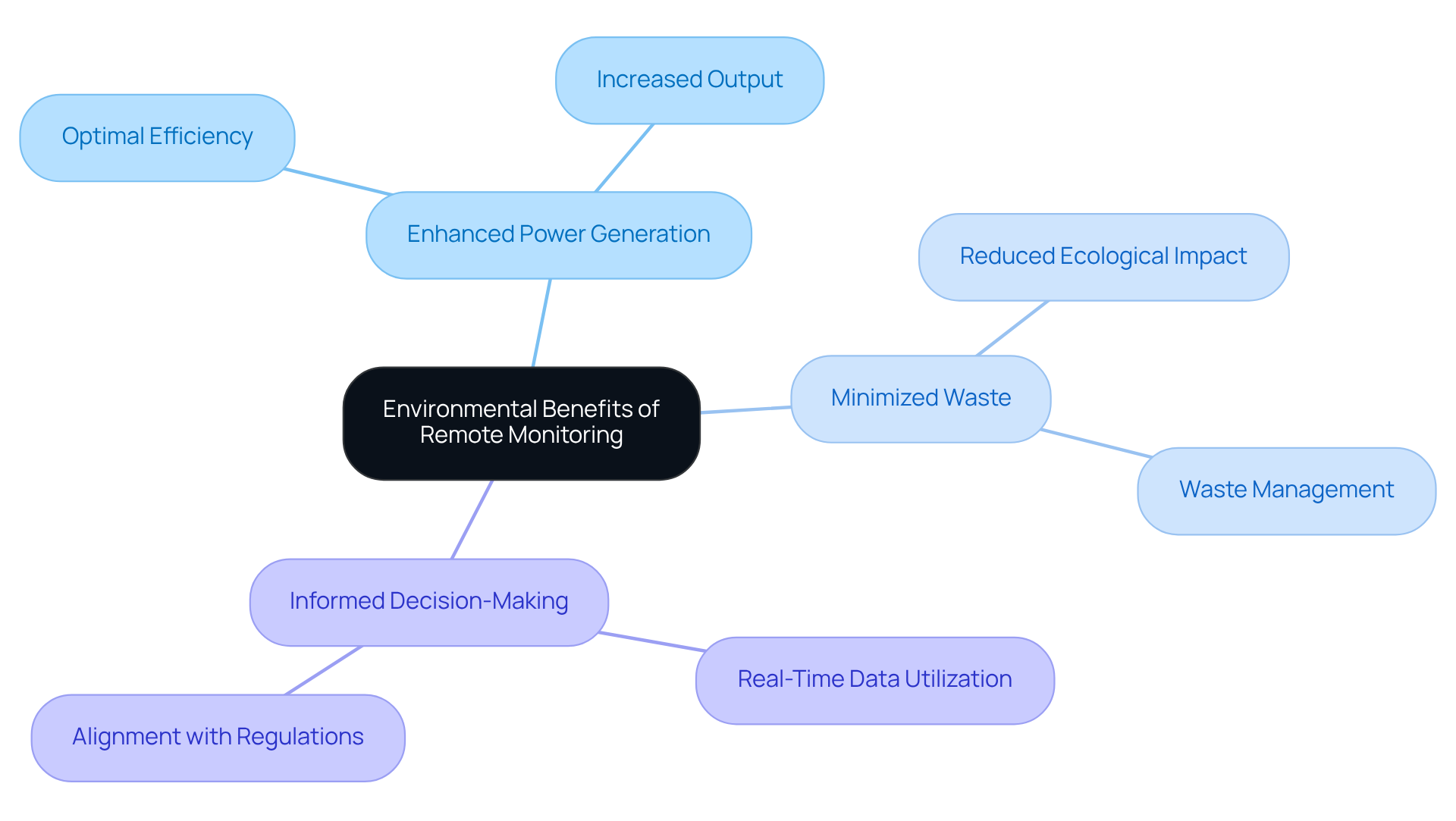
Scalability: Accommodate Future Expansions
Distant observation technologies are designed for adaptability, empowering energy operators to expand their operations without significant modifications to existing infrastructure. As new technologies emerge and power demands escalate, these systems can seamlessly integrate additional sensors and monitoring tools. This inherent flexibility ensures that solar fields can grow and adapt to changing market dynamics and energy requirements, thereby fostering long-term sustainability and profitability.
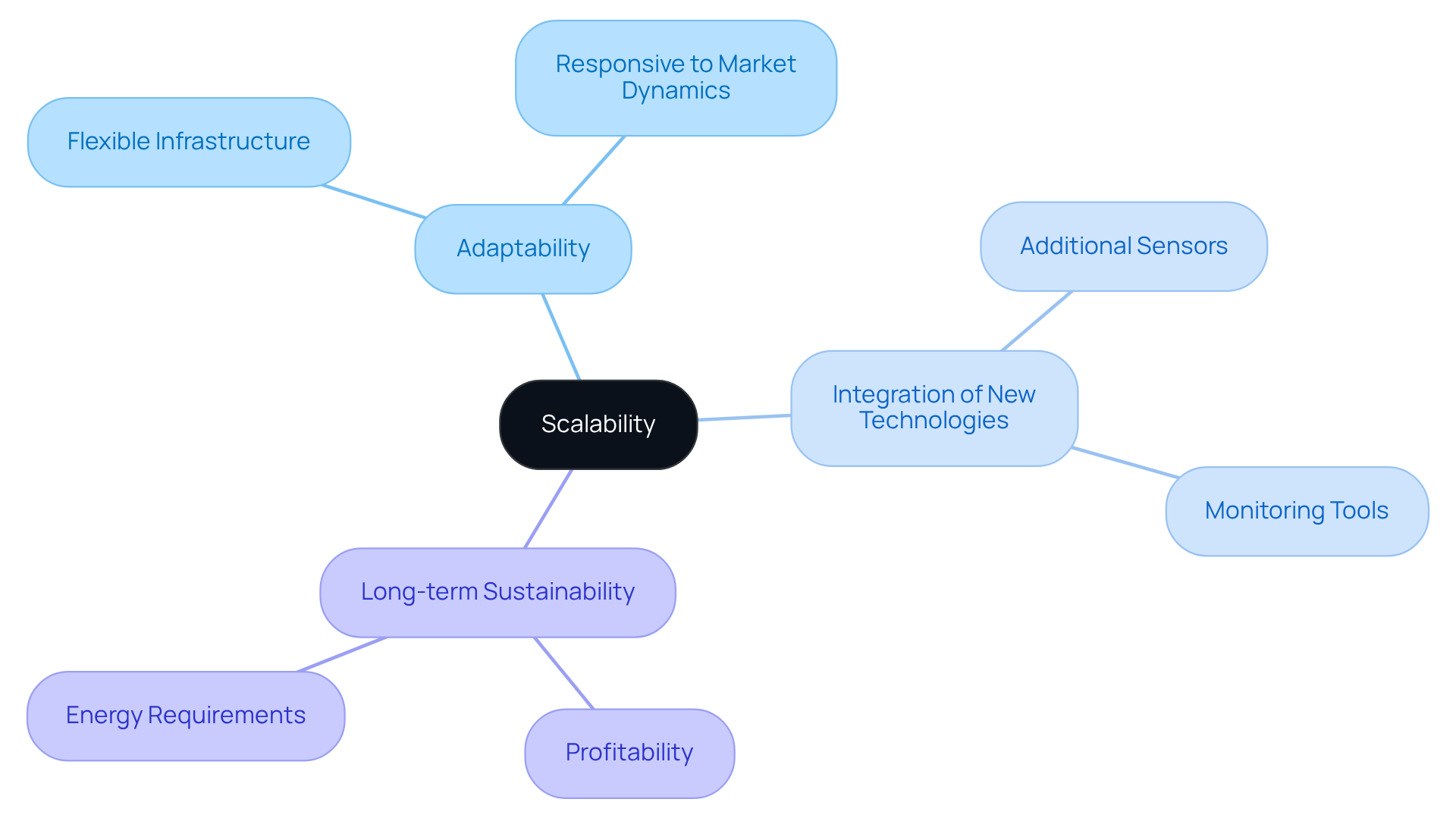
Regulatory Compliance: Facilitate Audits and Inspections
Remote monitoring of solar fields plays a pivotal role in ensuring regulatory compliance by providing the precise and timely data essential for audits and inspections. With comprehensive documentation of energy generation, performance metrics, and maintenance tasks, personnel can effortlessly demonstrate adherence to environmental and safety regulations. This level of transparency not only mitigates the risk of penalties but also fosters trust with regulatory bodies and stakeholders.

Integration Capabilities: Enhance Project Management
Integrating remote monitoring systems with various project management tools significantly enhances operational efficiency. This approach consolidates data from multiple sources, allowing operators to streamline workflows and improve communication among team members. As a result, data-driven decisions become more accessible. Such integration not only simplifies project management but also strengthens the ability to respond to challenges and opportunities in real-time. Ultimately, the success of solar energy initiatives is greatly supported by remote monitoring of solar fields.
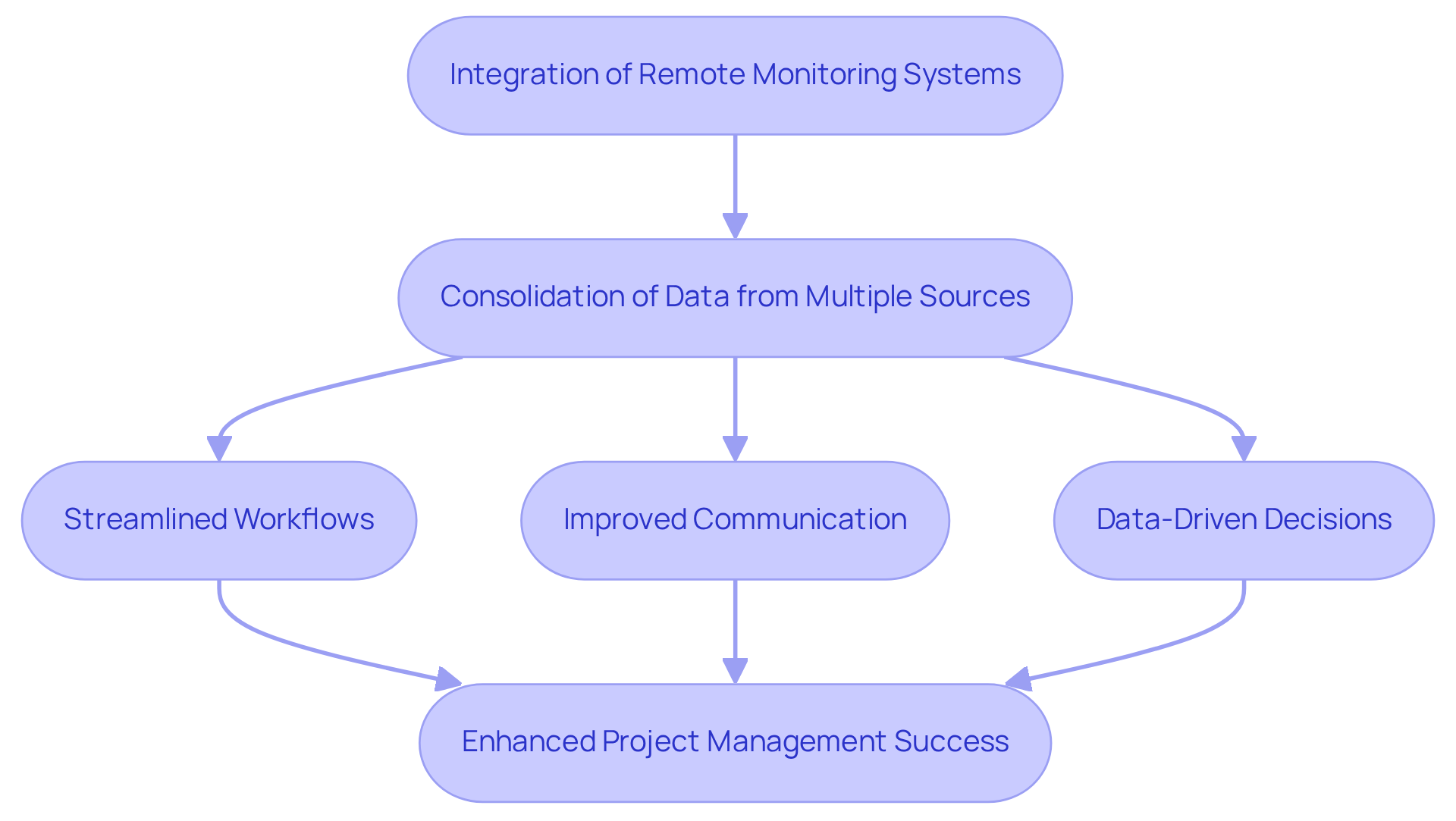
Conclusion
The remote monitoring of solar fields stands out as a transformative approach that significantly enhances efficiency and operational effectiveness. By embracing this technology, energy operators can harness real-time data to optimize performance, reduce costs, and ensure compliance with regulatory standards, ultimately fostering a more sustainable energy future.
Throughout this discussion, several compelling benefits of remote monitoring have been highlighted. Real-time data access facilitates swift decision-making, while predictive maintenance anticipates issues before they escalate. Each of these advantages contributes to maximizing energy output and minimizing operational expenses. Enhanced security measures protect valuable assets, and scalability allows for future growth without substantial infrastructure changes, all underpinned by the critical need for regulatory compliance.
As the energy sector continues to evolve, adopting remote monitoring systems will be essential for those seeking to improve efficiency and sustainability. By integrating these technologies, operators can not only enhance their operational capabilities but also contribute positively to environmental goals. Embracing this shift is not merely a strategic move; it is a vital step toward a more efficient and sustainable energy landscape.
Frequently Asked Questions
What services does Harbinger Land provide for energy and infrastructure projects?
Harbinger Land offers comprehensive land services including site and right-of-way acquisition, advanced title research, and GIS mapping, specifically tailored for energy and infrastructure projects across the United States.
How does Harbinger Land enhance operational efficiency?
Harbinger Land enhances operational efficiency by leveraging cutting-edge technology, such as AI-powered title research software, which improves client satisfaction and streamlines the land acquisition process.
What sectors does Harbinger Land serve?
Harbinger Land serves clients in the natural gas, renewable energy, and municipal sectors, mobilizing large groups swiftly to meet diverse project requirements.
How does real-time data access benefit energy field managers?
Real-time data access allows energy field managers to remotely monitor solar fields, enabling them to identify issues like underperforming panels or equipment malfunctions immediately, thus enhancing operational efficiency.
What technology is used for remote monitoring of solar fields?
Remote monitoring of solar fields utilizes IoT sensors and advanced monitoring platforms to facilitate continuous system performance tracking.
What are the cost-saving benefits of implementing remote monitoring in solar fields?
Remote monitoring can reduce labor costs by as much as 30% by minimizing the need for on-site inspections, allowing for better resource allocation and identifying maintenance needs before they escalate into costly repairs.
Can you provide an example of cost reductions from remote monitoring?
The Circle K case study illustrates how resource management programs have led to significant cost reductions through improved oversight and operational efficiency, contributing to a more sustainable operational budget for renewable initiatives.
List of Sources
- Cost Savings: Reduce Operational Expenses
- Circle K – Significant Cost Savings and HVAC Control Upgrade - Energy & Technical Services (https://energy-ts.com/case_studies/circle-k-significant-cost-savings-and-hvac-control-upgrade)
- Case Studies | Presto Geosystems (https://prestogeo.com/case_studies)




